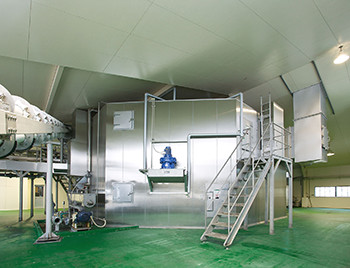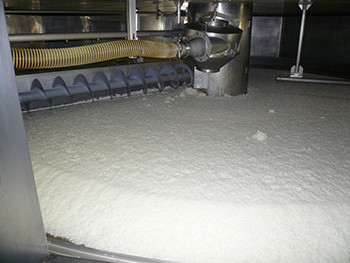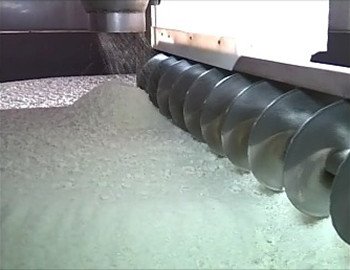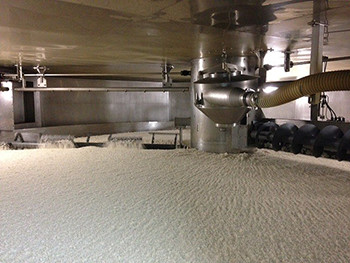Kikai-sei-kiku-hō
- 【English】
- Automatic (machine) kōji-making
- 【Japanese】
- 機械製麹法
The “tray” method of making koji takes place using futa trays in an insulated koji-muro on a toko bed and tana tables. In contrast, machine-made koji sees temperature and humidity under machine control, with the growth of koji-kin adjusted automatically.
Experiments in the automation of the koji-making process were carried out from the Meiji Period (1868-1911), but unsatisfactory equipment development prevented practical application. In 1952, two Nada firms carried out experiments with continuous and intermittent fans, after which the equipment came into practical use.
A number of variations later arose, but the general principle is of a 20-30cm layer of koji-mai air-cooled either continuously or intermittently, thereby controlling air temperature, humidity and oxygen levels. Today, automated koji making apparatus for making koji without using fans or blowers has also been developed.
The advantages of machine-made koji include increased capacity, reductions in labour, the time taken to make koji and savings in equipment space.

kikai seikiku exterior

kikai seikiku interior 1

kikai seikiku interior 2

kikai seikiku interior 3

